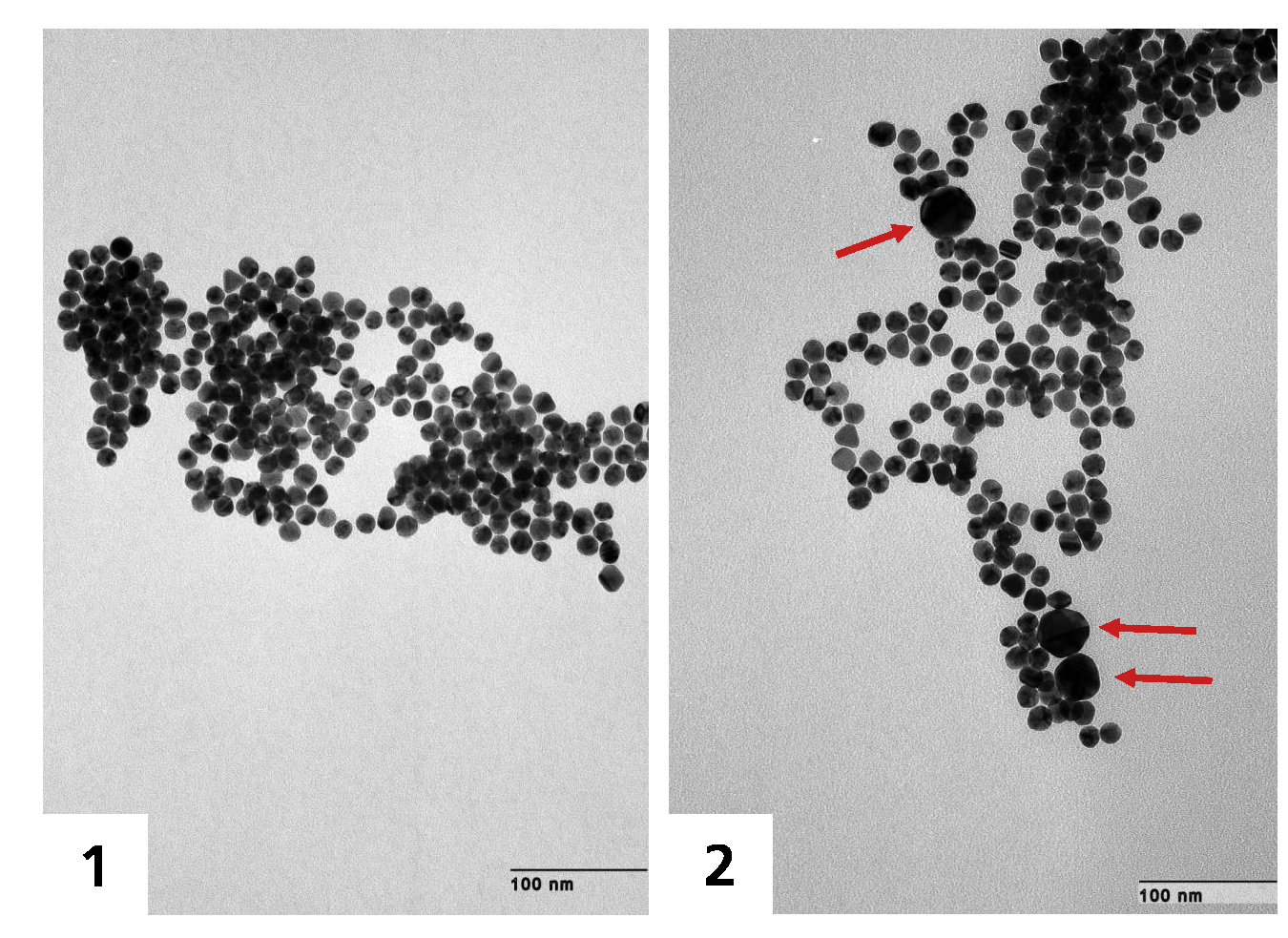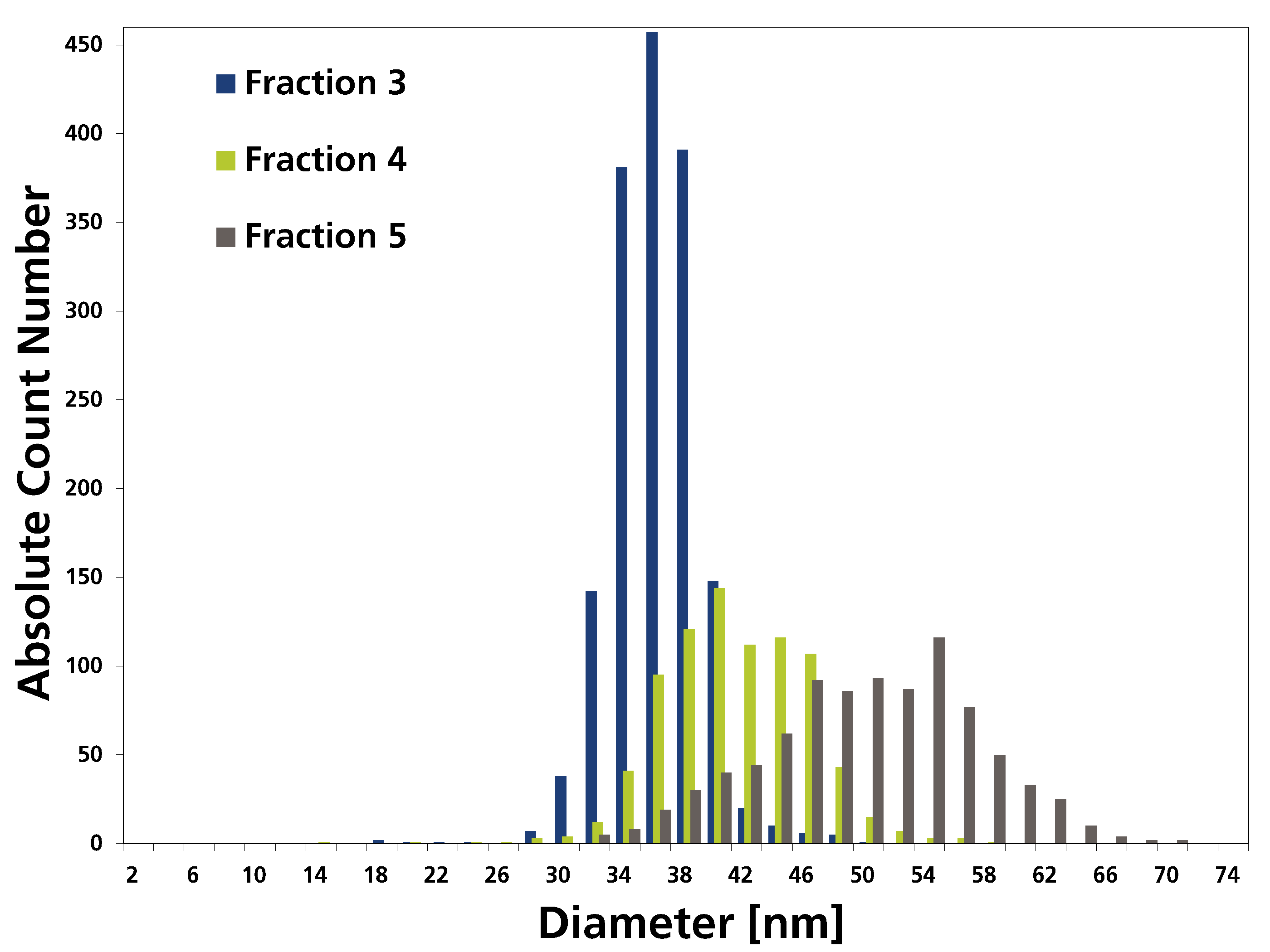Introduction
Nanoparticles (NPs) are omnipresent in today’s environment and used in a highly increasing number of products. Whenever investigations on nanoparticles are of interest, be it in terms of toxicity, physical and chemical properties, pharmaceutical prospects, environmental considerations or simply application-based, a reference material is necessary. The availability of defined NP standards is of utmost importance for any user dealing with questions of nanoparticle sizing or tracing, and they are commonly used for giving the basis for evaluation and standardization methods, technologies or applications. Engineered NPs with defined properties (shape, size and composition) are offered by various companies and institutions in different qualities, e.g. National Institute of Standards and Technology, NIST; Joint Research Centre, JRC; Postnova Analytics. Consequently, the know-how for producing monodisperse nanoparticles is kept secret, and new technologies and methods are needed to meet the demand for even more monodisperse products. This can be achieved either by well-defined synthesis procedures or through selective isolation methods. [1-3]
We therefore want to point not only towards the possibility of a selective separation to obtain pure NP samples, but moreover to a further increasing of the monodispersity of NPs and obtaining samples with user-defined properties!
This present application note describes a separation and size-distribution analysis using Asymmetrical Flow Field-Flow Fractionation (AF4). The fractionation takes place in a semipreparative channel (Figure 1), which offers purification of NPs up to the milligram scale. Since AuNPs are one of the main reference and standardization materials (due to their stability, inertness and biocompatibility), two monodisperse AuNP standards were exemplarily chosen for the experiments.

For accurate size determination of the AuNPs, the semi-preparative AF4 channel was coupled with online-Dynamic Light Scattering (DLS) using a dedicated flow cell.
Experimental
The system used for separation and analysis of the gold NPs is composed of an AF4 unit connected online to a dynamic light scattering (DLS) detector.
For the investigation, two AuNP samples (15 nm, 40 nm) were each initially analyzed on the analytical purpose AF4-channel. In a second step, the separation method was directly transferred to the semi-preparative fractionation channel without further modifications to obtain reasonable NP quantities. The injected amount for semi-preparative AF4 was shown to be as high as 0.4 mg (15 nm), resp. 0.2 mg (40 nm) AuNPs in one single run. Quality control and validation was performed by online DLS measurements and TEM measurements of the fractionated (PN8050 fraction collector) samples.
Results
The obtained AF4-DLS fractograms are presented in Figure 2 and Figure 3 indicating a mean hydrodynamic diameter of 20 ± 2 nm (n = 3) for the 15 nm AuNP sample, respectively 45 ± 4 nm (n = 3) for the 40 nm AuNP sample.


After collection of the fractions 1 and 2 (15 nm AuNPs) and 3 – 5 (40 nm AuNPs) each sample was analyzed by TEM. Representative TEM images of each sample and the size distribution of the 40 nm sample are shown in Figures 4 and Figure 5 respectively. TEM and DLS data show that the 15 nm AuNP sample is highly monodisperse. The geometric diameter measured by TEM of fraction 1 is 15-18 nm which was effectively cleaned from larger particles (> 50 nm) that can be found in fraction 2 (red arrows in Figure 4). A real powerful fractionation was possible and validated for the 40 nm AuNP sample. The inherent sample composition of AuNPs between 22 nm to >50 nm was fractionated into three virtually monodisperse samples in the range of 22 – 28 nm (3), 32 – 40 nm (4) and 38 nm – 50 nm (5) (TEM pictures Figure 4 and 5).



Conclusion
The semi-preparative AF4 setup allows the user to isolate NPs in the milligram scale and even higher depending on the sample. The process can be monitored by size measurements via online DLS hyphenation or via TEM after fraction collection. It was shown that monodisperse AuNP standards can be isolated in purified fractions with further increased monodispersity. The cut-off for each sample can be adjusted to meet user requirements and yield only NPs with defined size properties.
References
[1] T. P. J. Linsinger, G. Roebben, C. Solans, R. Ramsch, Trends in Analytical Chemistry, 2011, 30 (1), 18-27.
[2] A. Kumar, C. K. Dixit, Advances in Nanomedicine for the Delivery of Therapeutic Nucleic Acids, 2017, 43-58.
[3] P. Mrkwitschka, S.-L. Abram, A. Thünemann, B. Rühle, J. Radnik, H. Bresch, U. Resch-Genger, V.-D. Hodoroaba, Microscopy and Microanalysis, 2022, 28 (1), 802-805 .
[4] R. Xu, Particuology, 2015, 18, 11-21.

